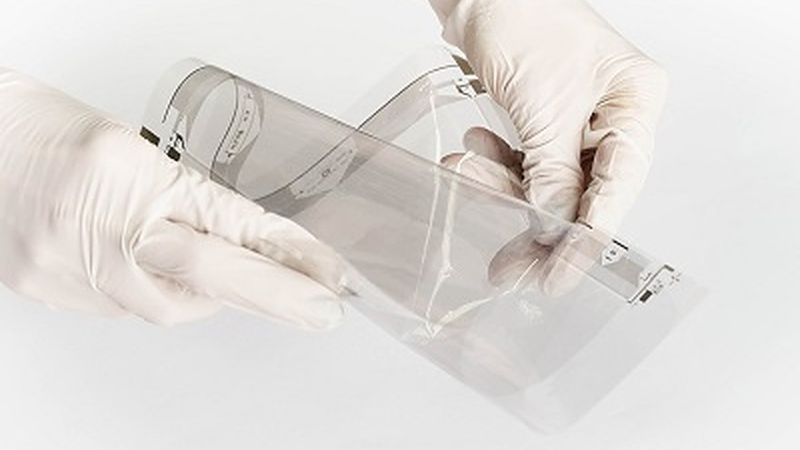Five benefits of flexible electronics for displays and sensors
Flexible electronics isn’t a new technology, but it has achieved a remarkable progress over the past years and has become increasingly important to many sectors such as consumer electronics, automotive, retail and healthcare.
Flexible electronics isn’t a new technology, but it has achieved a remarkable progress over the past years and has become increasingly important to many sectors such as consumer electronics, automotive, retail and healthcare. IDTechEx analysts forecast that the total market for printed, flexible and organic electronics will grow from $31.7 billion in 2018 to $77.3 billion in 2029.
Flexible electronics is a technology that allows you to build electronic circuits on flexible substrates thus making them bendable and stretchable. It enables new product paradigms that aren’t possible with conventional semiconductors and glass substrates. Here we explore some of the attributes of flexible electronics that make this tech attractive to product designers and consumers alike.
Flexible
Transistors can be made from either inorganic or organic materials, or a mix of both. FlexEnable fabricates transistors using organic materials which replace the silicon and hard ceramic materials with soft, carbon-based materials. The organic thin-film transistors (OTFTs) we use are known as FlexiOM™ - they are inherently flexible and have greater performance than amorphous silicon. These high-performance OTFTs can be processed at temperatures lower than 100°C allowing for the use of lower cost thin film substrates thus enabling flexible devices.
While flexible electronics have many applications, at FlexEnable we are primarily focused on flexible displays. Yet, our flexible OTFT platform can drive flexible sensors and other flexible devices. This platform has enabled the development of flexible organic LCDs (OLCDs) that can bend down to 10mm and be scaled to large areas making them suitable for a range of applications including automotive, consumer electronics, smart home appliances and digital signage.
Light and thin
Display thickness and weight are especially important features for applications that require large area displays such as automotive and digital signage. Using a flexible substrate (instead of glass) in combination with organic transistors helps make the whole stack very thin. For example at FlexEnable we use low-cost bio-based substrates such as TAC (tri acetyl cellulose) which are just a fraction of a tenth of a millimetre thick. As a result the entire OLCD is just 0.3mm thick (without the backlight). Moreover, the thinness and flexibility of OLCD enables bezel-less displays through curved edges and folded borders. This brings huge value in applications like notebooks and tablets where borderless means bigger displays for the same sized device. The extreme thinness of TAC substrates also brings optical advantages to OLCD.
Unbreakable
One property of flexible electronics which deserves to be highlighted is their robustness. This makes a great difference for applications such as wearables, notebooks and other consumer electronics which traditionally feature glass-based displays or sensors. Incorporating an unbreakable, glass-free active matrix display could become a unique selling point for consumers.
Cost advantage
The processes and materials for manufacturing flexible electronics differ, but the aim is to make them lower cost than conventional electronics. Roll to roll printing has been long considered the ultimate approach to the cost-effective manufacture of electronics over large and small areas. It will remove the waste of materials currently incurred in factories and will drive product costs down. However, there are a few steps to overcome before roll to roll printing becomes the norm.
At FlexEnable we have developed a practical approach to the cost-effective manufacture of flexible electronics for flexible displays and sensors. Our processes are compatible with existing flat panel display lines meaning that all of the existing equipment can be reused. A maximum processing temperature below 100°C allows for the use of lower cost flexible substrates (e.g. TAC) and minimises distortion (improves yield), whilst enabling a low cost, high yield method of handling flexible substrates.
Innovation
For brands and designers to keep innovating and developing next generation products, they need tools and components that will enable them to do this. Flexible electronics allow the development of flexible components such as flexible displays and sensors which remove form factor constraints and give designers creative freedom. A typical example is the automotive industry where designers are already thinking outside the box by reinventing the car interior with the help of flexible displays. French company Novares, for example, has demonstrated how flexible display technology can help improve design and safety by integrating conformable OLCDs supplied by FlexEnable into the interior of their demo car Nova Car 2.
